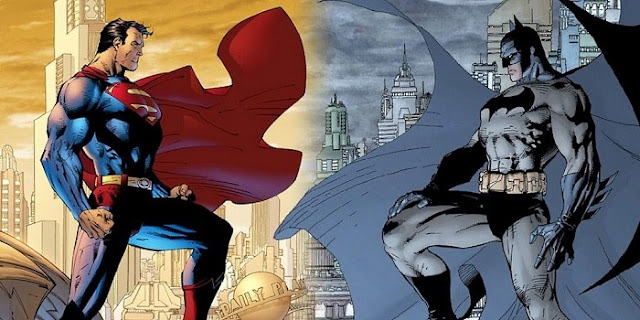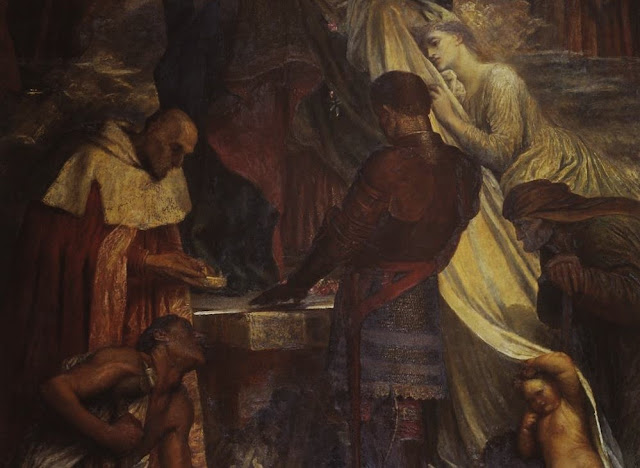– Or –
What Bothered Me So Much About This Movie
(with only mild spoliers)
For the record, I’ve been a lifelong fan of Batman and Superman. Exhibit A: Superman pajamas (as both a 4 year old and as a 34 year old). Exhibit B: Presenting an academic paper on Batman at a national conference in 2012. Exhibit C: Getting tickets to see Batman v Superman on opening night.
So you’d think that I’m just the sort of market that Warner Brothers was targeting. But as I sat watching Batman v Superman: Dawn of Justice last night, something kept eating at me. I haven’t been able to stop thinking about it, so here’s hoping that writing about it will exorcise the demon this movie put in me (spoiler pun).
A couple of years ago, I wrote a blog post about Christian imagery in the newest Superman movie, Man of Steel. I thought that the movie’s theme of self-sacrifice for something larger than oneself made it a good fit for using Christian symbols as part of its storytelling, and was secretly hoping that I’d get more of that sort of thing in this new movie. What I actually got was a lot of religion, but without any real religious substance – a body without a soul. In other words, I felt that the writers / director / producers were using religious language to give a feeling of depth to a story that lacked any real depth.
A few quick examples [mild spoilers for this paragraph only]: One disillusioned citizen climbs a Superman statue to spray paint the phrase "false god" on the chest, but its significance isn't fleshed out (Superman frowing at the image doesn't count). Batman sees (in a vision?) military officers kneel when Superman enters a room, but this is never referred to afterward, and doesn't actually happen. And Lex Luthor gives Superman a quick lecture on the Christian philosophical problem of evil (if God is all-good and all-powerful, then why does evil exist in the world?), but this monologue is obviously rushed and seems like a rather unnecessary way to tell Superman that he has to kill Batman (this idea is also never revisited). Each of these religious images seems like it's going to add another dimension to the film, but never does.
Don’t get me wrong – I’m all for experiencing a story that explores the nature and problems of godhood, worship, and evil. In fact, I crave those sorts of stories and plan to try my hand at writing some. But it bothers me when such rich ideas are wasted and incredible opportunities are squandered in the service of spectacle.
I know that it is possible to tell interesting and meaningful stories about Batman and Superman using religious language and imagery. Just a few examples:
 The Dark Knight Returns by Frank Miller and Klaus Janson
The Dark Knight Returns by Frank Miller and Klaus Janson
This book inspired parts of Christopher Nolan’s The Dark Knight Rises, as well as Batman v Superman. At its heart, it’s a story about the nature of identity and authority. It sometimes uses religious language to express these ideas, but the use of this language is always in the service of deepening the story.
Superman: For Tomorrow by Brian Azzarello and Jim Lee
Here, a third of the world’s population has disappeared, and Superman believes it’s his fault. So to try to work through his internal struggle, he speaks with a priest, who helps Superman to view his actions within a larger moral framework (playing with the idea of Superman as a savior / intercessory figure). It also raises some questions about the nature of paradise.
Kingdom Come by Mark Waid and Alex Ross
A story about a new generation of superheroes who challenge the morals and ideals of Superman and Batman’s generation. What makes this even more interesting is that it's seen through the lens of the book of Revelation. And the entire series is painted.
In addition to works that utilize relgious imagery in the storytelling process, it’s also possible to use religion as an active participant in superhero stories, and for the stories to be richer because of it. Case in point—the new Daredevil series on Netflix. In this show, religion plays a central role in the hero’s development, especially when it comes to struggling with the morality of what he’s doing. Leah Schnelbach’s article on this is well worth reading.
On a related note, I’ve been consuming a lot of Peter Pan-related media—most recently the film Pan—so one thing that I’ve been especially sensitive to is adapting or re-using someone else’s ideas to tell a story of your own (more on this in later posts). For those who deeply love the source material, it’s easy to tell if someone else also loves the original concept in the same sort of way. Given the fact that I love Batman, Superman, and religion, I just didn’t feel that those involved in the movie loved all three of them in the same way (or even two out of the three).
Again, I think it’s absolutely possible to tell stories where Batman, Superman, and religion intersect. One of the things I like most about the relationship between Batman and Superman in some stories is the active and messy dialogue between Superman’s idealism / hope and Batman’s realism / skepticism. These sorts of conversations happen all the time regarding religion, and everyone could really benefit from seeing these ideas played out on a grand fictional scale. Now, such a piece of art in this vein might not reach the heights of Dostoyevsky’s The Brother’s Karamozov, but I think that these are important ideas for the public to think about and talk about, and if superheroes in theaters can get people chatting about these issues, all the better.
The concept of Superman’s idealism / hope felt largely absent in this film (as opposed to the previous film, which was one of its redeeming qualities—no pun intended this time). Instead, tonally it felt like Batman’s skepticism was in a super-powered fistfight with Superman’s realism and selfishness. I’m not saying that stories like that can’t work (it worked really well in Alan Moore and Dave Gibbon’s Watchmen, for instance), but it just didn’t seem to work here. This movie had the form of big ideas, but lacked the heart that gives those ideas life.
I hope that this superficial use of religious language, imagery, and symbolism doesn’t happen again (especially not on such a grand scale), but I’m afraid that it will. What I hope for most, however, is that writers and artists and musicians and storytellers of all kinds will continue to draw on the richness of religious ideas to enliven their creations. I believe that good artists can do this, and do it well.
So, to anyone wanting to use religious ideas in superhero movies, don’t forget one of the most deeply religious truths ever stated on the big screen—with great power comes great responsibility.
Please be responsible.


























